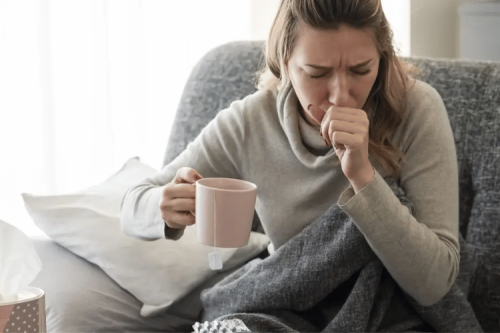
Water is essential to life, yet even these simplest elements can pose serious dangers under certain conditions. Choking on water often seems like a minor inconvenience, but in some cases, it can lead to life-threatening complications. From dry drowning to aspiration pneumonia, the risks associated with water choking are broader than most realize.
This in-depth guide will explore how choking on water can occur, its potential dangers, and what you can do to handle these situations effectively. We'll also provide prevention tips and answers to common questions so that you'll feel more equipped to address the issue proactively and reactively.
What Happens When You Choke on Water?
Choking on water occurs when liquids enter the trachea (windpipe) instead of the esophagus. Usually, the epiglottis, a small flap of cartilage, prevents this from happening by closing during swallowing. When this mechanism fails, water can be inhaled into the airway, triggering a cough reflex.
The Process of Water Aspiration
Water aspiration happens when the natural swallowing mechanism fails due to:
- Drinking too quickly
- Laughing, talking, or gasping while swallowing
- Poor swallowing reflexes (common in children or people with medical conditions like dysphagia)
Symptoms of choking usually include coughing, wheezing, or discomfort in the throat and chest. Although most cases resolve after a coughing spell, more severe incidents may lead to complications such as aspiration pneumonia or laryngospasms (involuntary spasms of the vocal cords).
Dry Drowning Explained
While rare, dry drowning is a serious condition where water exposure causes the vocal cords to spasm and close off the airway. Unlike typical drowning, dry drowning often involves tiny amounts of liquid. Symptoms can appear up to 24 hours after the incident and include:
- Extreme fatigue
- Difficulty breathing
- Persistent coughing
- Chest pains
Seeking immediate medical attention is critical if dry drowning is suspected, especially in children.
Who is Most at Risk?
While choking on water can happen to anyone, certain groups are particularly vulnerable:
- Children: Due to their underdeveloped swallowing reflexes and higher likelihood of distractions (e.g., laughing while drinking).
- Elderly individuals: Age-related changes in swallowing mechanics increase aspiration risks.
- People with medical conditions: Those with neurological disorders, dysphagia, or weakened gag reflexes are more prone.
- Swimmers and divers: Accidental inhalation during water activities can lead to choking or aspiration.

You Choke on Water
Choking on Water vs. Choking on Food
Though both involve the airway, choking on water and food differ in key ways.
Key Differences
-
Water Aspiration:
- Typically does not block the airway entirely.
- Triggers a strong coughing reflex to expel the liquid.
- May result in complications like pneumonia, but is generally less immediately life-threatening than food choking.
-
Food Obstruction:
- It can completely block the airway, leading to asphyxia.
- Requires immediate intervention, such as abdominal thrusts, to prevent death.
- More sudden and critical compared to water choking.
Coughing is the most common resolution mechanism for choking on water. However, if water enters the lungs, complications may arise over time, as opposed to the immediate danger posed by food choking.
How to Tell the Difference?
Determining whether you or someone else is dealing with water or food choking can guide your response:
- For water choking, coughing is usually productive and helps clear the airway.
- For food choking, coughing may be absent if the blockage is severe, and symptoms such as cyanosis (blue complexion) or a silent choking gesture are common.
Both situations require prompt attention, but severe food choking demands a faster emergency response.
Recognizing Severe Choking
Recognizing and understanding the severity of choking is crucial for effective intervention. While some incidents resolve naturally, others can escalate into medical emergencies.
Mild Choking Symptoms
- Persistent coughing
- Discomfort in the throat or chest
- Wheezing or whistling sounds while breathing
- Hoarseness
Signs of Severe Choking
Look for the following signs that indicate the situation has become critical:
- Cyanosis (a bluish tint around the lips or face)
- Gasps or inability to breathe
- Struggling to speak or make any noise
- Clutching the throat
- Loss of consciousness
These symptoms indicate a life-threatening inability to breathe and require immediate intervention.
When to Seek Medical Attention
- If the choking episode lasts longer than a few minutes or doesn’t resolve with coughing.
- Signs of oxygen deprivation, such as fatigue, confusion, or fainting, occur.
- Symptoms of dry drowning (coughing or breathing issues long after the incident) develop.
Don’t delay in contacting emergency medical services when in doubt.

Recognizing Severe Choking
First Aid Techniques for Choking on Water
Prompt and proper intervention can save lives in water choking incidents. While mild episodes often resolve with coughing, severe cases require decisive action.
Immediate Steps to Take
-
Encourage Coughing:
- If the airway is partially compromised, the body’s natural cough reflex is the best way to clear it.
- Avoid patting the back unless coughing is ineffective, which might worsen the obstruction.
-
Correct Positioning:
- Have the individual lean forward slightly to prevent water from entering deeper into the airway.
-
Monitor for Distress:
- Watch for worsening signs like cyanosis or an inability to cough effectively.
Advanced Techniques for Severe Cases
If coughing fails:
- Perform Back Blows:
- Stand behind the person and deliver five firm blows between the shoulder blades.
- Use Abdominal Thrusts (Heimlich maneuver):
- Position your fists just above the navel and provide upward, forceful pulls to expel the water.
For unconscious individuals:
- Call emergency services immediately.
- Begin CPR (Cardiopulmonary Resuscitation) if there’s no pulse or breathing.
- Insert rescue breaths to restore oxygen flow.
Importance of Training
Learning first aid techniques like CPR and the Heimlich maneuver can make the difference in life-or-death situations and instill confidence when dealing with emergencies.
Preventing Choking on Water
Prevention remains the best strategy for avoiding the risks of water choking. Adopting proactive measures can reduce the likelihood of incidents.
Practical Tips for Prevention
- Slow Down:
- Drink water at a controlled pace. Avoid large gulps or drinking while laughing or talking.
- Modify Activities:
- Avoid distractions like playing or swimming during meals and drinks.
- Supervise Children:
- Never leave young children unattended while swimming, drinking, or bathing.
- Use Safety Equipment:
- Encourage the use of life jackets and other flotation devices for swimmers.
- Accommodate Medical Needs:
- For those with swallowing disorders, provide thickened liquids or adjust drinking strategies to match their abilities.
Avoid Risky Behaviors
Activities like rapid drinking, talking, or engaging in physical activity while swallowing increase the risk of choking. Practicing mindfulness during these moments can be crucial.
Educating Others
Raising awareness about water choking risks is key. Teaching family members first aid and promoting water safety practices helps create a safer environment.
Frequently Asked Questions (FAQ)
Q: Can choking on water or saliva lead to death?
A: Yes, choking on water or saliva can lead to death, particularly if the airway is obstructed and the person is unable to breathe. In severe cases, water entering the lungs can cause serious complications.
Q: What are the symptoms of choking on water?
A: Symptoms of choking on water may include coughing, gagging, struggling to breathe, and a feeling of tightness in the throat. If choking persists, it is crucial to seek immediate assistance.
Q: How can one provide first aid for choking on water?
A: First aid for choking on water involves encouraging the person to cough if they can do so. If they cannot expel the water, performing back blows between the shoulder blades may help clear the airway.
Q: Are certain medical conditions more likely to cause choking on water?
A: Yes, certain medical conditions, such as neurological disorders, swallowing difficulties, or reduced reflexes, can increase the risk of choking on water. Individuals with these conditions should exercise caution while drinking.
Q: What are the choking hazards associated with different age groups when choking on water?
A: Different age groups face varying choking hazards. Young children might accidentally inhale water while playing, while elderly individuals may have weakened reflexes, increasing their risk during drinking or eating.
Q: How can saving lives during water choking incidents be achieved?
A: Immediately recognizing choking symptoms and prompt application of first aid techniques, such as the Heimlich maneuver or back blows, can save lives during water choking incidents.
Q: What should one do if water enters the airway and the person cannot cough?
A: If water enters the airway and the person cannot cough, it is essential to perform first aid measures immediately. This may include back blows and abdominal thrusts to help expel the water.
Q: Can inhaling water while swimming cause serious consequences?
A: Yes, inhaling water while swimming can lead to serious consequences such as aspiration pneumonia or drowning, especially if the water enters the lungs and the person is unable to clear it effectively.
Q: What should you do if someone coughs after choking on water?
A: If a person is coughing after choking on water, encourage them to continue coughing, as this reflex can help expel the water and clear the airway. Monitor their condition closely to ensure they can breathe adequately.
Q: What are the leading causes of unintentional injury related to choking on water?
A: The leading causes of unintentional injury related to choking on water include accidental inhalation during drinking, swimming, or engaging in physical activities where water is present, highlighting the need for awareness and safety measures.
The Bottom Line
While choking on water is often minor, it can have serious consequences if not appropriately addressed. Understanding the physiological processes, preventing risks, and being prepared to act quickly can mitigate the dangers. With knowledge and vigilance, you can ensure that a momentary mishap doesn't become life-threatening.
Stay informed, and don’t hesitate to seek professional help when symptoms persist. Preparedness saves lives.








 Login with Google
Login with Google Login with Facebook
Login with Facebook